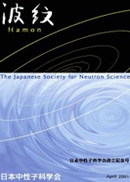Volume 24, Issue 1
Displaying 1-11 of 11 articles from this issue
- |<
- <
- 1
- >
- >|
-
2014Volume 24Issue 1 Pages 2
Published: 2014
Released on J-STAGE: November 14, 2018
Download PDF (931K)
-
2014Volume 24Issue 1 Pages 3-5
Published: 2014
Released on J-STAGE: November 14, 2018
Download PDF (1472K) -
2014Volume 24Issue 1 Pages 6-10
Published: 2014
Released on J-STAGE: November 14, 2018
Download PDF (2685K) -
2014Volume 24Issue 1 Pages 11-14
Published: 2014
Released on J-STAGE: November 14, 2018
Download PDF (1292K) -
2014Volume 24Issue 1 Pages 15-19
Published: 2014
Released on J-STAGE: November 14, 2018
Download PDF (2670K) -
2014Volume 24Issue 1 Pages 20-23
Published: 2014
Released on J-STAGE: November 14, 2018
Download PDF (1818K) -
2014Volume 24Issue 1 Pages 24-27
Published: 2014
Released on J-STAGE: November 14, 2018
Download PDF (1992K) -
2014Volume 24Issue 1 Pages 28-33
Published: 2014
Released on J-STAGE: November 14, 2018
Download PDF (2646K) -
2014Volume 24Issue 1 Pages 34-39
Published: 2014
Released on J-STAGE: November 14, 2018
Download PDF (2362K)
-
2014Volume 24Issue 1 Pages 40-44
Published: 2014
Released on J-STAGE: November 14, 2018
Download PDF (1445K)
-
2014Volume 24Issue 1 Pages 45-49
Published: 2014
Released on J-STAGE: November 14, 2018
Download PDF (1794K)
- |<
- <
- 1
- >
- >|
